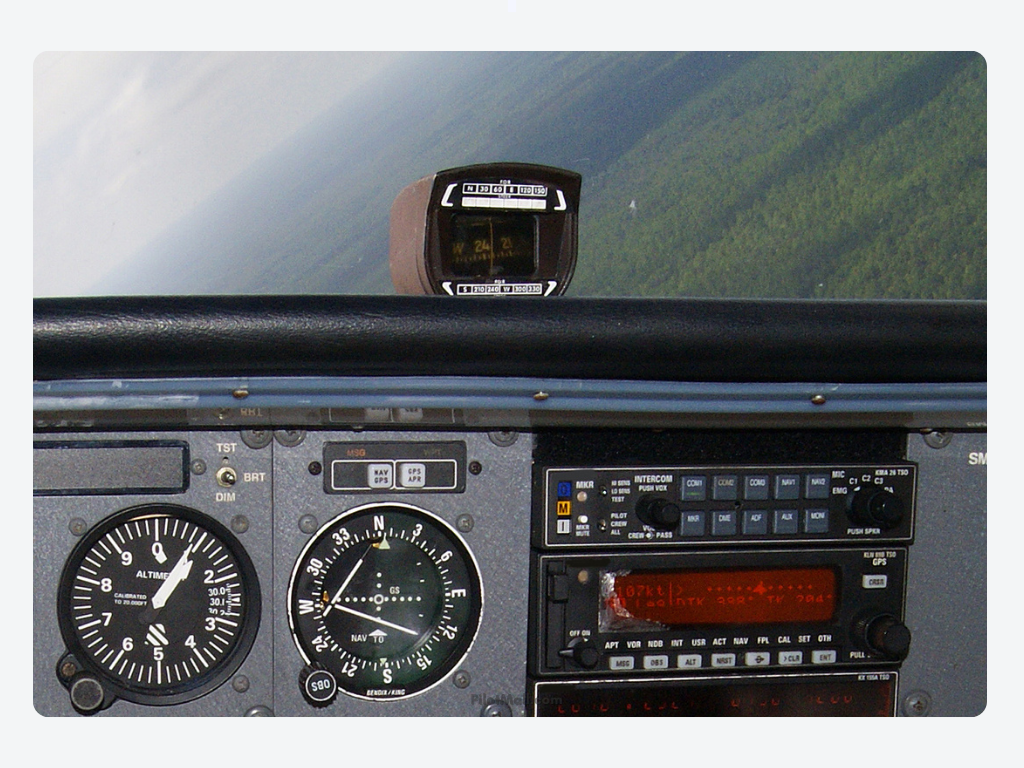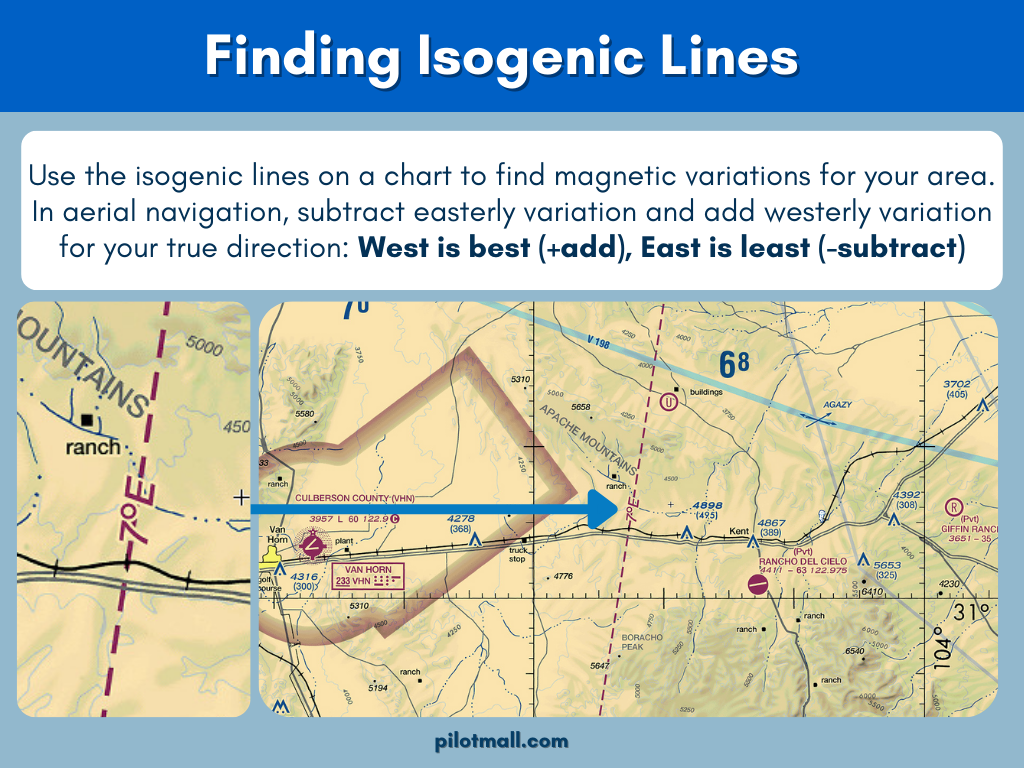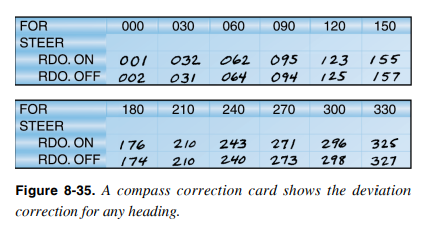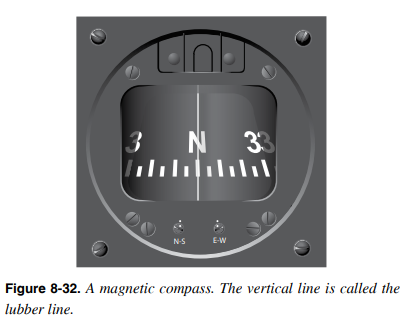Magnetic Compass Errors: How Pilots Identify & Correct Them
In the wonderous domain of aviation, pilots depend on the magnetic compass as a steadfast guide through the boundless skies. While this instrument may appear uncomplicated, it conceals a tapestry of intricate errors that demand our scrutiny.
Within this article, we'll unravel the enigmas of compass errors and empower you with the wisdom to enhance safety and precision during your flights.
Join us as we navigate through learning about the various errors, and pave the way towards mastery and precision in aviation.

Featured Pilot Gear
Browse our selection of high-quality pilot supplies! Your purchase directly supports our small business and helps us continue sharing valuable aviation content.
In aviation, pilots rely on the magnetic compass as a dependable backup for navigation. While it looks simple, it’s affected by several common errors that every pilot should understand.
In this article, we’ll break down the major magnetic compass errors and share practical tips you can use to improve accuracy and safety in flight.
Let’s dive in.

Understanding the Magnetic Compass
A pilot’s understanding of how magnetism affects the aircraft is key to understanding how the compass works.
The magnetic compass indicates the aircraft’s magnetic heading by aligning with Earth’s magnetic field, which generally runs north–south. It can be especially useful as a reference during turns, helping pilots confirm their intended course after completing a maneuver.
One interesting fact: Earth’s magnetic north pole is located near the geographic South Pole, and Earth’s magnetic field lines originate near the geographic South Pole and terminate near the geographic North Pole.

Common Magnetic Compass Errors
Despite its usefulness, the magnetic compass isn’t perfect. Pilots use the acronym VD-MONA to remember the most common errors:
- Variation
- Deviation
- Magnetic Dip
- Oscillation
- Northerly Turning Errors
- Acceleration/Deceleration Errors
Let’s break down each one.

1) Magnetic Variation
-
What is it?
Magnetic variation (also called declination) is the angular difference between true north and magnetic north. Because Earth’s magnetic field doesn’t perfectly match geographic north, a compass points to magnetic north, not true north.
-
Tips to remember
Use isogonic lines on charts to find your local variation. A classic memory aid is:
- West is best (add)
- East is least (subtract)
-
How to correct it
Adjust your true course using the known variation in your area. Add westerly variation and subtract easterly variation to convert between true and magnetic, as appropriate for your calculation.
2) Magnetic Deviation
-
What is it?
Deviation is compass error caused by magnetic fields inside the aircraft (electrical systems, avionics, metal structure, etc.). The compass has compensating magnets, but some deviation usually remains.

(Source: FAA Pilot’s Handbook of Aeronautical Knowledge )
A compass correction card is usually installed near the compass and shows approximate corrections for various headings (often just a few degrees).
-
Tips to remember
Keep magnetic/electronic items away from the compass. Even small objects (like a headset) can cause noticeable heading changes when placed near it.
-
How to correct it
Use the compass correction card for the heading you’re flying. In planning math, you’ll often see it written as:
- Magnetic heading ± deviation = compass heading
3) Magnetic Dip
 (Earth poles image credit: Geek3, CC BY-SA 3.0)
(Earth poles image credit: Geek3, CC BY-SA 3.0)
-
What is it?
Magnetic dip is the tendency of the compass magnet to align with Earth’s magnetic field lines. In the Northern Hemisphere, the north end of the compass tends to dip downward; in the Southern Hemisphere, it tends to dip upward. Dip increases closer to the poles and decreases nearer the magnetic equator.
-
Tips to remember
Dip is most noticeable at higher latitudes. Compasses are built with small weights to reduce dip in typical operating latitudes, but accuracy gets worse as you approach the poles.
-
How to manage it
You don’t “fix” dip in flight—you account for it by understanding the behaviors it causes (especially turning and acceleration errors) and cross-checking other instruments.
Helpful video: Part Time Pilot explains dip-related compass errors clearly.
Magnetic Dip: Turning Errors
When turning from a northerly heading, the compass may briefly indicate a turn in the opposite direction. When turning from a southerly heading, the compass may indicate a turn in the correct direction but at an exaggerated rate.
-
Remember UNOS (Northern Hemisphere):
- Undershoot North
- Overshoot South
Magnetic Dip: Acceleration/Deceleration Errors
In the Northern Hemisphere, accelerating causes the compass to indicate a turn toward north, and decelerating causes it to indicate a turn toward south. (The opposite occurs in the Southern Hemisphere.)
-
Remember:
- ANDS (Northern Hemisphere): Accelerate North, Decelerate South
- SAND (Southern Hemisphere): South Accelerate, North Decelerate
4) Oscillation Error
 ( FAA Pilot’s Handbook of Aeronautical Knowledge )
( FAA Pilot’s Handbook of Aeronautical Knowledge )
-
What is it?
Oscillation is the “swinging” of the compass card back and forth around the actual heading. It can be influenced by turbulence, maneuvering, and the combined effects of other compass errors.
-
Tip
The vertical reference mark is called the lubber line. Read the compass at the lubber line and avoid “chasing” the swing.

( FAA Pilot’s Handbook of Aeronautical Knowledge )
-
How to manage it
When setting a heading indicator to match the magnetic compass, use the average indication between swings.
Magnetic Compass Preflight Steps
After engine start (and once instruments have stabilized):
- Compare the heading indicator (directional gyro/HSI) to the magnetic compass and set it as appropriate.
- Confirm the compass is mounted securely and the card moves freely.
- If the compass is fluid-filled, ensure it’s properly filled (no obvious leaks or bubbles that would affect readability).
Training Materials
These materials can help you build solid foundational knowledge for private pilots and beyond.
 |
Airman Certification Standards (ACS) - Private Pilot AirplaneUnderstand what it takes to earn your private pilot certificate with our Airman Certification Standards reprint. This softcover book includes up-to-date FAA standards for aeronautical knowledge and practical testing. |
Frequently Asked Questions

-
What’s the difference between variation and deviation?
Variation is the difference between true north and magnetic north based on your location. Deviation is compass error caused by magnetic fields within the aircraft.
-
Why does the compass act weird in turns?
Turning errors are largely caused by magnetic dip. In the Northern Hemisphere, remember UNOS: undershoot north and overshoot south.
-
Why does the compass change when I accelerate?
Acceleration/deceleration errors are also dip-related. In the Northern Hemisphere, remember ANDS: accelerate north, decelerate south.
-
Should I rely on the magnetic compass for precise headings?
The magnetic compass is a critical backup reference, but it’s affected by several errors. Use it correctly, understand its limitations, and cross-check other instruments for accurate navigation.
-
How do I reduce compass errors during flight?
Fly smoothly, avoid abrupt accelerations and steep turns, keep magnetic items away from the compass, and use the average reading if the card is oscillating.
Takeaway
Once you understand the magnetic compass and its common errors, you’ll be better equipped to interpret what it’s telling you—especially when other systems fail or need cross-checking.
Mastering details like variation, deviation, dip-related turning/acceleration errors, and oscillation can elevate your situational awareness and improve your precision in the cockpit.
Want to Know More About Aircraft Instruments?
Check out these guides:
- Heading Indicator: What It Is, How It Works, and What to Do if It Fails
- How It Works: Airspeed Indicator (Extensive Guide)
- Pitot-Static System: How Does It Work?
- Watch Your Attitude: A Complete Guide to Aircraft Attitude Indicators
- How to Read an Altimeter (Complete Guide)
Did you find this article helpful?
Do you think we missed anything important? Let us know in the comments below!













1 comment
Just like an adventurer navigating through uncharted territory, pilots use isogenic lines on their charts to determine the dynamic challenges of magnetic variation.
Isogenic or Isogonic lines
That is all
Thanks I look forward to the update.